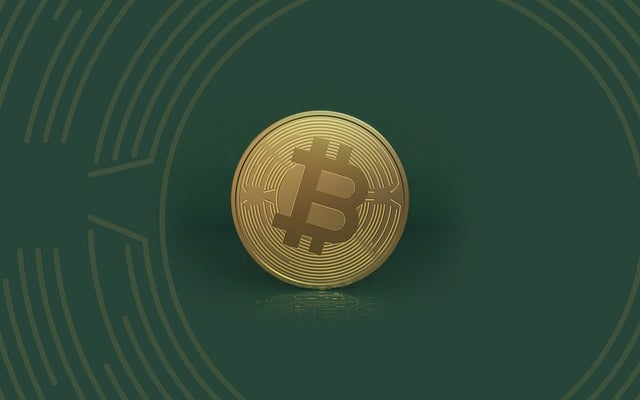Initial Coin Offerings (ICOs) have emerged as a popular fundraising mechanism within the blockchain community, allowing startups to connect directly with investors who believe in their vision. ICOs involve selling new tokens in exchange for established cryptocurrencies like Ethereum or Bitcoin, offering both advantages (global outreach, low cost) and risks (volatility, fraud). Regulated by jurisdiction-specific approaches ranging from bans to defined frameworks, the future of ICOs hinges on balancing regulation with innovation to ensure investor protection and confidence. Understanding the intricacies of ICOs is crucial for navigating this dynamic landscape.
“Unraveling the complex world of Initial Coin Offerings (ICOs): A Beginner’s Guide. This comprehensive article offers a detailed exploration of ICOs, their evolution within the cryptocurrency landscape, and how they facilitate token distribution. We demystify the investment process, revealing both the advantages and risks involved. Furthermore, it delves into regulatory considerations shaping the future of ICOs, providing an insightful look at this dynamic aspect of digital currencies.”
- Understanding Initial Coin Offerings (ICOs): A Beginner's Guide
- The Evolution of ICOs in the Cryptocurrency Landscape
- How ICOs Work: Token Distribution and Investment Process
- Benefits and Risks of Participating in an ICO
- Regulatory Considerations and the Future of ICOs
Understanding Initial Coin Offerings (ICOs): A Beginner's Guide

Initial Coin Offerings (ICOs) have gained significant traction in recent years as a means for startups and established projects within the blockchain space to raise funds. Unlike traditional venture capital or stock market routes, ICOs allow for direct participation from individuals who believe in the project’s vision and potential. At its core, an ICO is akin to issuing shares in a company but using cryptocurrency instead of fiat currency. Investors purchase these new tokens with the expectation that their value will appreciate as the project grows and gains adoption.
ICOs offer several key advantages for both issuers and investors. For issuers, it’s a relatively low-cost way to reach a global audience of potential backers without involving traditional financial intermediaries. For investors, ICOs provide access to potentially high-growth assets and an opportunity to participate in groundbreaking projects that could disrupt existing industries. However, as with any new and largely unregulated market, there are risks involved, including volatility, fraud, and regulatory uncertainty. Therefore, understanding the mechanics of ICOs, thorough due diligence, and a prudent approach are crucial for navigating this dynamic landscape.
The Evolution of ICOs in the Cryptocurrency Landscape

The rise of cryptocurrencies has brought about a significant shift in the financial world, and one of its most disruptive innovations is the Initial Coin Offering (ICO). ICOs, as a means of fundraising for new cryptocurrency projects, have evolved dramatically since their inception. Initially, these offerings were seen as a straightforward way to generate capital, allowing startups to bypass traditional investment routes. However, the early days of ICOs were marred by scams and fraudulent activities, leading to increased scrutiny from regulators worldwide.
As the cryptocurrency landscape matured, so too did the ICO model. Investors became more sophisticated, demanding better transparency and security. This evolution led to the establishment of stricter regulations and guidelines for ICOs, ensuring that only legitimate projects could access this funding method. Today, ICOs serve as a vital component in the crowdfunding ecosystem for blockchain startups, offering investors an opportunity to participate early in promising ventures while potentially reaping significant returns.
How ICOs Work: Token Distribution and Investment Process

Initial Coin Offerings (ICOs) have emerged as a revolutionary way to raise funds and distribute tokens in the cryptocurrency space. Unlike traditional investment methods, ICOs offer a unique approach where startups or projects create and sell their own digital tokens to investors in exchange for established cryptocurrencies like Ethereum or Bitcoin. This process involves several key steps.
First, the project team develops a whitepaper outlining the concept, technology, token structure, and funding goals. They then establish a smart contract on a blockchain platform, which defines the rules and regulations for token distribution. During the ICO, investors purchase these tokens using cryptocurrency, contributing funds to the project. The tokens often represent future access, ownership, or benefits within the project’s ecosystem, providing investors with potential returns as the project grows. This method allows for decentralized funding and global investment participation, making it an exciting and dynamic aspect of the crypto industry.
Benefits and Risks of Participating in an ICO

Initial coin offerings (ICOs) have emerged as a popular fundraising mechanism in the cryptocurrency space, offering both exciting opportunities and inherent risks for participants. One of the primary benefits is accessibility; ICOs allow anyone with an internet connection to invest in innovative projects that may disrupt traditional industries. This democratization of investment has attracted numerous aspiring entrepreneurs and investors seeking high returns. Through an ICO, project creators can gain exposure, build a community of supporters, and secure funding for their blockchain-based ventures.
However, the risks associated with participating in an ICO are significant. Regulatory uncertainty surrounding cryptocurrencies and ICOs varies across jurisdictions, leaving investors vulnerable to legal implications. Additionally, many ICOs are prone to fraud, with some projects using misleading information or even disappearing with investor funds. The lack of oversight and protection can result in substantial financial losses for unwary participants. As such, understanding the nuances of Initial coin offerings (ICOs) explained is crucial before diving into this high-risk, yet potentially rewarding, investment arena.
Regulatory Considerations and the Future of ICOs

The world of Initial Coin Offerings (ICOs) is a rapidly evolving landscape, and regulatory considerations play a pivotal role in shaping its future. As ICOs gain traction as a funding mechanism for new projects, governments and financial regulators worldwide are grappling with how to classify, regulate, and oversee these digital asset sales. The primary concern revolves around investor protection, ensuring transparency, and preventing illicit activities like fraud and money laundering. Each jurisdiction is taking a unique approach, ranging from strict bans to well-defined regulatory frameworks.
The future of ICOs could involve more robust regulatory oversight, potentially leading to increased legitimacy and adoption. Clear guidelines on compliance, anti-money laundering (AML) procedures, and know-your-customer (KYC) checks may encourage greater investor confidence. Additionally, regulatory clarity could attract institutional investors, further legitimizing the market. However, striking a balance between regulation and innovation is essential to foster healthy growth without stifling creativity in this cutting-edge sector.
Initial Coin Offerings (ICOs) have evolved significantly since their inception, transforming the way projects raise funds in the cryptocurrency landscape. By understanding how ICOs work, from token distribution to investment processes, and being aware of the associated benefits and risks, investors can navigate this dynamic space more effectively. Regulatory considerations continue to shape the future of ICOs, underscoring the importance of staying informed and adhering to legal frameworks. As the world of cryptocurrencies expands, ICOs explained remain a crucial tool for funding innovative projects while fostering a robust digital economy.
